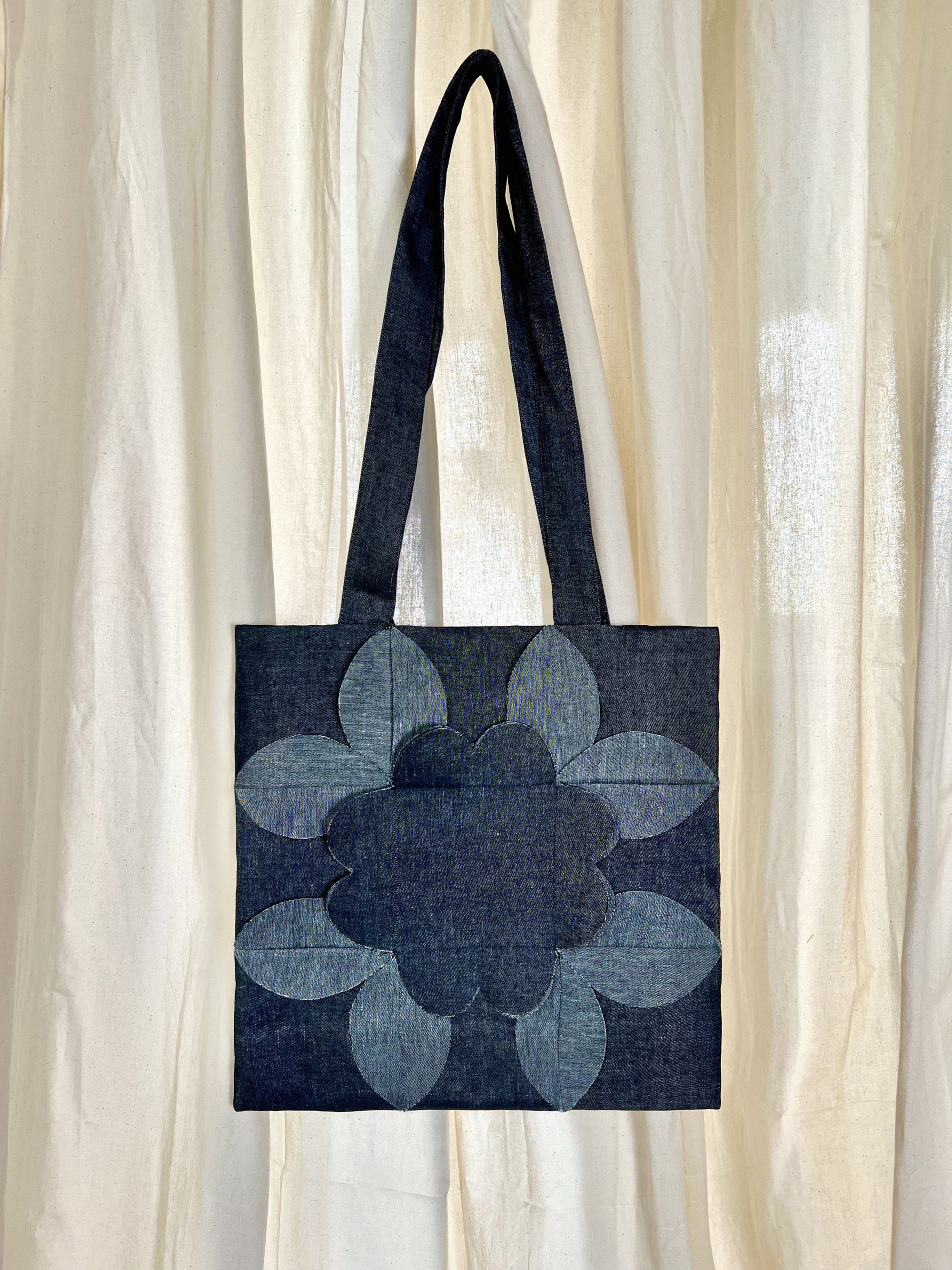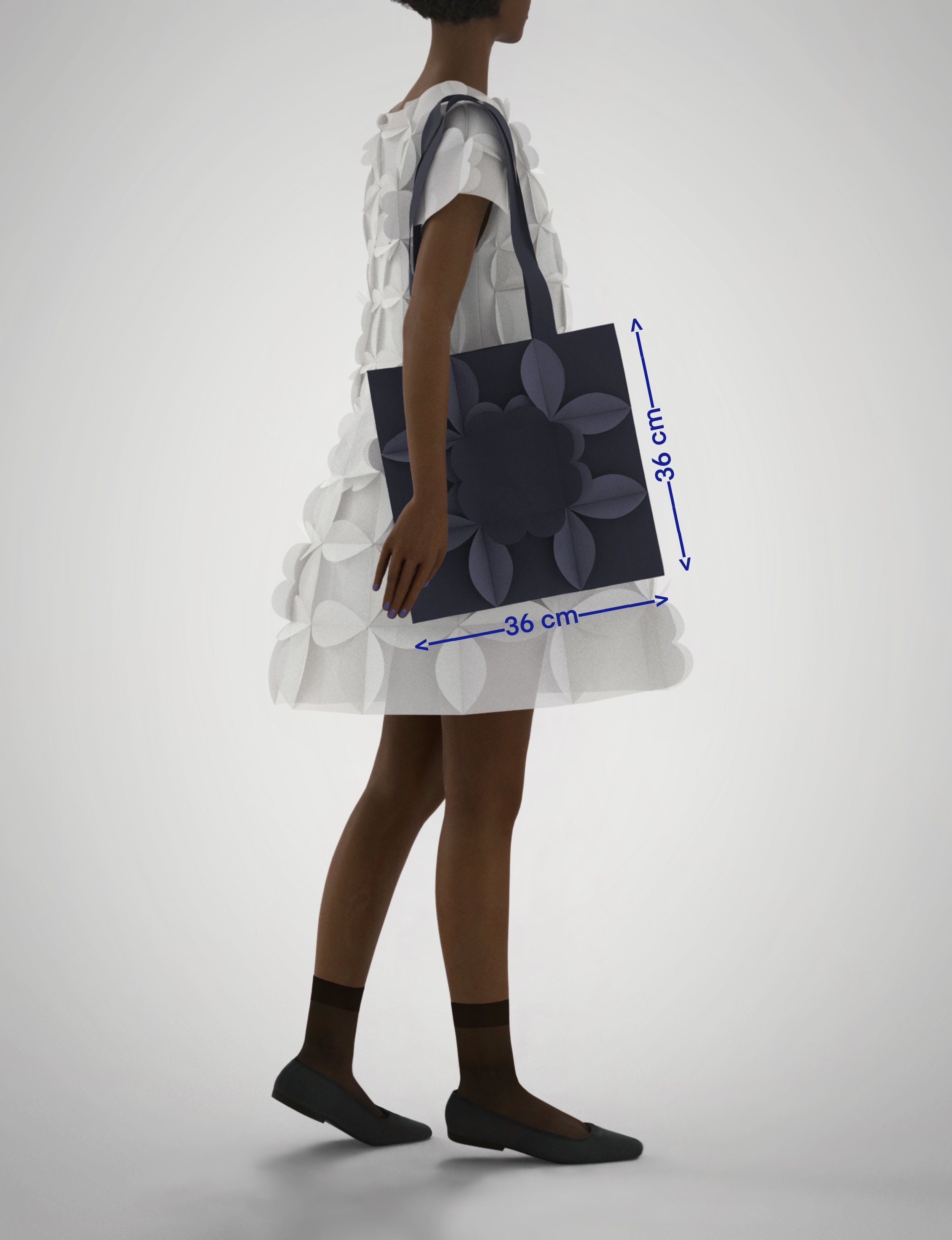Flower Patchwork Tote Bag (PDF Pattern)






Flower Patchwork Tote Bag (PDF Pattern)
This product is provided as a printable PDF pattern (with A4 and A0 printing options), and includes PDF sewing instructions for how to make the lined patchwork tote bag. The download includes 2 size options, Small and oversized. There is also the option to make either tote bag size with raw flower patchwork edges or fully bagged out flower patchwork pieces. All patterns for each option are provided
The Flower Patchwork Tote bag pattern is part of the Flower Patchwork Series, which is an exploration of the hybridisation of pattern cutting and textile design, which is at the core of what ROBERTS | WOOD does.
The Flower Patchwork Tote bag is designed as an entry-level project to make use of offcuts and remnants you may have leftover from other sewing projects, or possibly from unused textiles or clothing. It is the simplest pattern in the ROBERTS | WOOD KiT patchwork design series.
We would recommended this project for confident beginners
The simple shape of the bag is offset by the exaggerated floral 3d patchwork textile design, which features on both sides of the bag. It has 2 shoulder straps.
Finished bag measurements (Small / Oversized)
Height : 36 / 45cm
Width: 36 / 45cm
Strap length: 78cm
Sewist Skill level: As with many ROBERTS | WOOD designs, this pattern is not a “traditional style” sewing pattern.
This pattern is recommended for beginner or intermediate sewists and assumes basic knowledge of sewing techniques and terminology. We think that the Tote bag could make a fun practice project for a person who wants to improve their beginner skills and explore and experiment with textile design. It is a perfect project to undertake using fabric offcuts that are otherwise going to waste.
Although it is possible to complete this project in a few hours (depending on what finishings you choose), we recommend allowing several days for the completion of your project, as it is intended to be something you can take your time with and really enjoy the making process, following our principals of ‘slow fashion’.
Construction techniques: This unconventional Patchwork design features exposed raw edges on the ‘Flower Petals’ ; visible on the right side of the bag. The design includes a lining pattern for the inside of the bag. The pdf instructions also suggest further hand-stitching and embroidery techniques you may want to explore and add to your project for further customisation, or to add as a finishing depending on your selected fabrics. You can either leave the flower petal edges raw, and let them fray over time, or you can use a blanket stitch to finish the edges (both finishing options are pictured in the product images above)
Fabric selection: The design will work best with medium weight fabrics with a fairly dense weave, as there are exposed raw edges in the design and this will keep the frayed edges to a minimum (unless that is your desired effect). Because the bag is lined, it could be possible to use a lighter weight or more delicate fabric for the outer patchwork if you wish, as you can line the bag with something more substantial. Heavier-weight fabrics can be difficult to sew on a domestic sewing machine, but if you have tested the fabric on your machine, by all means choose a heavier fabric. Always use an appropriate size needle for your selected fabric.
The design shown makes use of our old cutting-table offcuts, using a single cotton/linen ‘denim’ style fabric where the wrong side of the fabric has a different colour tone to the right side of the fabric. You can copy this design, or, you can customise this design in any way you choose. For example you could cut it from multiple different fabrics, depending what you have available - each pattern piece could be cut from a completely different fabric if desired. Alternatively you could cut it in two different fabrics, alternating the patches to create a checkerboard effect. The possibilities to try out different combinations are endless!
Materials required: Fabric for patchwork (see size listing for usage), fabric for lining (optional), threads. No additional notions are required.
Equipment required: Scissors, sellotape (if printing the A4 pattern), sewing machine, hand sewing needle, measuring tape, chalk, pins